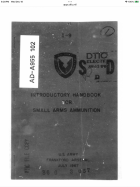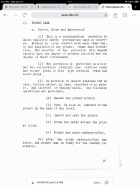wboggs
Gold $$ Contributor
I have seen it with some Rem factory loads with SwiftAFrame that were about 20 years old and stored in controlled conditions after I bought them retail. Would get an occasional flier but no pressure signs. Pulled them and found corrosion in the bullet/neck. Put in a seater and seat them deeper and they pull easier.I've read some stuff in the past about bullets cold welding to the case, I've also seen it called cold soldering. But I've never experienced it until today. I came across an old box of ammo that I loaded about 3 years ago and was pretty stoked because it's Peterson brass. So I decided to break them down to use the brass for some new loads.
I use a collet puller die and these things were an absolute bear to get apart, twice the bullet slipped out of the collet. I tightened the collet down like crazy and then thought I was going to rip my press off the bench or pull the case out of the shell holder before finally breaking it free. The amount of force it took to pull apart is nuts. You can see in the photo that the bullet has some kind of black corrosion or something. And it's important to note that these were found in a box from when I moved a few years ago and the box has been stored in a spare bedroom in the house which is climate controlled.
Anyway, this got me wondering about the pressure spike associated with shooting something like this, especially if the load is already on the high end of max. I was wondering if anyone has seen any studies or write ups about this, I looked but couldn't find anything. I imagine shooting a round like these would have to affect pressure in some way. At the very least, accuracy will be all over the place.
About two years ago I started putting neo lube #2 inside the necks prior to seating...not because I was worried about cold welding, but for more consistent seating. If I had the patience, I'd seat some dummies with neo lube and let them sit for an extended period and see if the bullets pull easily, I'm guessing they would.
View attachment 1499763













